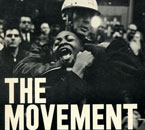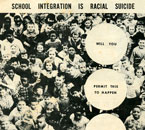


No image can, by itself, change the world, for every picture depends on context: the words, circumstances, and paths of distribution that endow it with greater levels of meaning and influence. Ultimately, words, captions, and narration can enhance or direct the meaning of visual images—creating context and even changing the implication or point of view of a particular image.
Image Credits/Captions (Click on thumbnails for full image)
Lorraine Hansberry (author), Danny Lyon (photographer). The Movement: Documentary of a Struggle for Equality, 1964. Simon & Shuster, New York. 10 3/4 x 16 3/4 x 3/8 in. Collection of Civil Rights Archive/CADVC-UMBC, Baltimore, MD, 2005.124. The first book of civil rights photography, this volume was commissioned by the Student Nonviolent Coordinating Committee. A collaborative project with photos principally by Danny Lyon and texts by playwright Lorraine Hansberry, The Movement alternates stark, black-and-white shots with eloquent words that together testify to the heartbreak and successes of the movement.
Martin Luther King at Communist Training School, c. 1964. Postcard. 3 1/8 x 5 5/8 in. Collection of Civil Rights Archive/CADVC-UMBC, Baltimore, MD, 2004.53. White supremacists and segregationists were often very adept at manipulating the meaning of photographs through the use of words and other visual cues, exemplified by this postcard of the young Martin Luther King, Jr. attending a meeting. By marketing the event as a “communist training school” and singling out King with an arrow, the postcard capitalizes on the anti-Communist fervor of the period to portray him as inherently dangerous and un-American.
“School Integration is Racial Suicide,” The White Sentinel, April 1956. Offset lithography. 11 x 8 1/2 in. Collection of Civil Rights Archive/CADVC-UMBC, Baltimore, MD, 2005.183